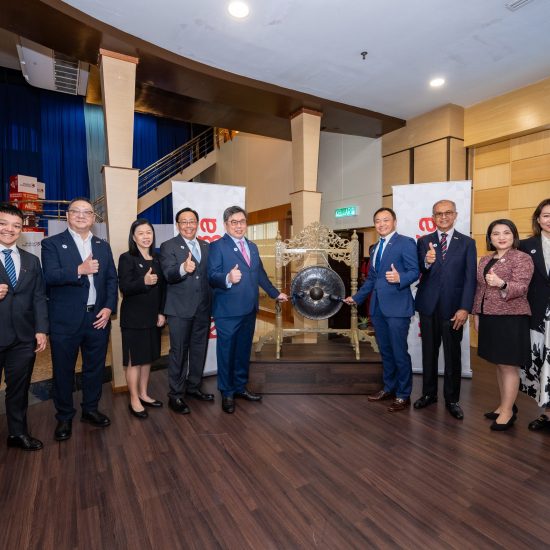
EdgeCortix has launched its SAKURA‑II M.2 AI accelerator for the Raspberry Pi 5 and other Arm‑based platforms, enabling high‑performance, energy‑efficient execution of generative AI at the device edge. With 60 TOPS and 30 TFLOPS performance within an 8–10 W power envelope, the SAKURA‑II module supports advanced models including Llama 2, Stable Diffusion, Vision Transformers and VLMs on compact, affordable hardware.
Dr Sakyasingha Dasgupta, EdgeCortix founder and CEO, highlighted that the integration “opens the door for innovators and enterprises around the world to build smarter, faster, and more efficient edge AI‑driven devices”. This remark underscores a clear strategic pivot: migrating AI workloads away from cloud dependence and embedding them directly into low‑power devices. Venture partner Sailesh Chittipeddi echoed this view, emphasising the appeal for IoT and edge application engineers seeking scalability without datacentre overhead.
The core of SAKURA‑II is EdgeCortix’s DNA architecture, offering high memory bandwidth—up to 68 GB/s—and support for dual-channel LPDDR4x. This combination optimises batch‑1 inferencing for real‑time AI tasks while maintaining minimal latency and maximised compute utilisation.
Market response has been mixed. It’s FOSS notes the roughly US $349 price tag for the M.2 module, with no explicit mention of shipping costs, urging buyers to clarify before purchase. A TechPowerUp forum debate revealed cost‑sensitive hobbyists comparing it to a US $130 AI HAT offering about 26 TOPS. One user characterised SAKURA‑II as “on another completely different ballpark” due to its RAM and bandwidth advantages for advanced applications.
For industrial users, particularly those operating in space‑weight‑power‑cost constrained environments such as drones, robotics, smart agriculture or security, SAKURA‑II’s offline capabilities are pivotal. By enabling autonomous AI without cloud reliance, organisations can enhance resilience and reduce latency in mission‑critical operations.
Academic research on efficient edge deployment reinforces this evolution. A paper from June 10, 2025 demonstrated quantised YOLOv4‑Tiny object detection on Raspberry Pi 5, achieving 28.2 ms inference per image at 13.85 W power consumption. While this study used CPU‑based INT8 quantisation, the performance and consumption metrics set a baseline that illustrates SAKURA‑II’s potential leap in efficiency and speed via dedicated silicon acceleration.
EdgeCortix’s positioning also aligns with wider trends in AI hardware development. Their DNA technology enables dynamic reconfiguration and mixed‑precision processing approximating FP32 accuracy—important for generative AI workloads that balance performance with model fidelity. Partners like SoftBank and Renesas have emphasised the importance of this co‑design approach, blending hardware IP with compiler‑driven software stacks to reduce TCO and accelerate time‑to‑market.
Industry analysts see SAKURA‑II and similar accelerators as closing the gap between cloud‑scale AI and embedded edge use cases. By supporting multi‑billion‑parameter models on hand‑held devices, they suggest a future where even small autonomous systems can perform complex tasks like content generation, language parsing and computer vision locally—without connectivity or latency constraints.
However, barriers remain. The ~$349 entry price may deter hobbyists and small‑scale developers, contrasted with cheaper model‑specific HAT solutions. Adoption may hinge on use case value—where the benefits of on‑device Generative AI outweigh acquisition and integration costs. Enterprise rollouts will need to consider software support, model compatibility, and real‑world inference benchmarks – details which are pending independent testing.
EdgeCortix provides MERA, its compiler and runtime platform, enabling developers to deploy models across heterogeneous Edge AI systems, signalling strong software ecosystem support. This software‑hardware synergy contrasts with many accelerators that must rely on limited driver support or manual optimisation.
The extension to Raspberry Pi 5 is significant. As one of the most accessible single‑board computers, Pi 5 offers a global developer base and extensive community support. Pairing it with SAKURA‑II could catalyse novel applications—from mobile robotics and decentralised AI devices to educational platforms that illustrate advanced AI concepts.
Going forward, key indicators to watch will include independent benchmark results, broader platform support, and commercial deployments in agriculture, defence, and industrial automation. The ROI calculation will depend on whether the performance and efficiency gains translate into measurable gains—lower energy costs, reduced latency, or enhanced autonomy.





